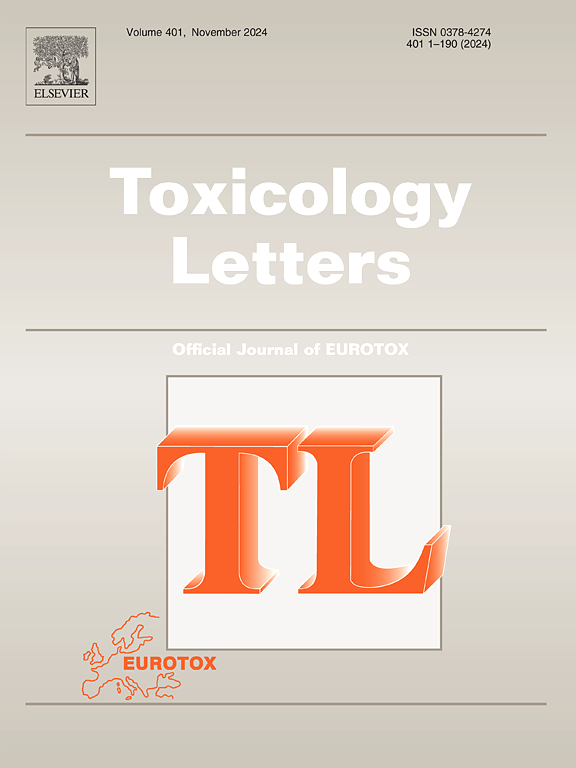PM2.5对SH-SY5Y细胞阿尔茨海默病样病理蛋白表达的影响及机制研究
IF 2.9
3区 医学
Q2 TOXICOLOGY
引用次数: 0
摘要
细颗粒物(PM2.5)是公认的对人体健康危害最大的环境污染物之一。目前的研究表明,PM2.5具有神经毒性作用,但具体机制尚不清楚。本研究将SH-SY5Y细胞暴露于PM2.5(100 μg/mL,持续24 h)中,观察其对阿尔茨海默病(AD)相关蛋白表达的影响,探讨PM2.5引起中枢神经系统损伤的可能机制。基于生物信息学结果,本研究采用PI3K抑制剂LY294002 (10 μmol/L, 1 h)和活性氧(ROS)抑制剂n -乙酰基-L-半胱氨酸(NAC, 5 nmol/L, 1 h)作为干预措施。结果表明,PM2.5暴露可显著增强SH-SY5Y细胞的氧化应激,上调炎症因子的表达,增加细胞凋亡。此外,暴露于PM2.5会导致ad相关病理蛋白(包括淀粉样蛋白-β (Aβ))水平升高,并促进Tau磷酸化,进一步表明其潜在的神经毒性作用。此外,ROS/PI3K/Akt/GSK-3β通路在这些过程中发挥关键作用。本研究为了解PM2.5对阿尔茨海默病患者的影响提供了依据,并为雾霾相关健康风险的预防和政府相关部门的风险管理提供了建议。本文章由计算机程序翻译,如有差异,请以英文原文为准。
Study on the effect and mechanism of PM2.5 on the expression of Alzheimer’s disease-like pathological proteins in SH-SY5Y cells
Fine particulate matter (PM2.5) is recognized as one of the most harmful environmental pollutants to human health. Current research indicates that PM2.5 exhibits neurotoxic effects, though the specific mechanisms remain unclear. In this study, SH-SY5Y cells were exposed to PM2.5 (100 μg/mL for 24 h) to observe its effects on the expression of Alzheimer's disease (AD)-related proteins and explore the possible mechanisms of central nervous system injury caused by PM2.5. Based on bioinformatics results, the study employed a PI3K inhibitor (LY294002, 10 μmol/L for 1 h) and a reactive oxygen species (ROS) inhibitor, N-acetyl-L-cysteine (NAC, 5 nmol/L for 1 h), as interventions. The results demonstrated that PM2.5 exposure significantly intensified oxidative stress in SH-SY5Y cells, upregulated the expression of inflammatory factors, and increased apoptosis. Additionally, exposure to PM2.5 led to elevated levels of AD-related pathological proteins, including amyloid-β (Aβ), and promoted Tau phosphorylation, further indicating its potential neurotoxic effects. Furthermore, the ROS/PI3K/Akt/GSK-3β pathway was found to play a key role in these processes. This research provides a basis for understanding the impact of PM2.5 on Alzheimer’s disease patients and offers recommendations for the prevention of haze-related health risks, as well as for risk management by relevant governmental departments.
求助全文
通过发布文献求助,成功后即可免费获取论文全文。
去求助
来源期刊

Toxicology letters
医学-毒理学
CiteScore
7.10
自引率
2.90%
发文量
897
审稿时长
33 days
期刊介绍:
An international journal for the rapid publication of novel reports on a range of aspects of toxicology, especially mechanisms of toxicity.
 求助内容:
求助内容: 应助结果提醒方式:
应助结果提醒方式:


